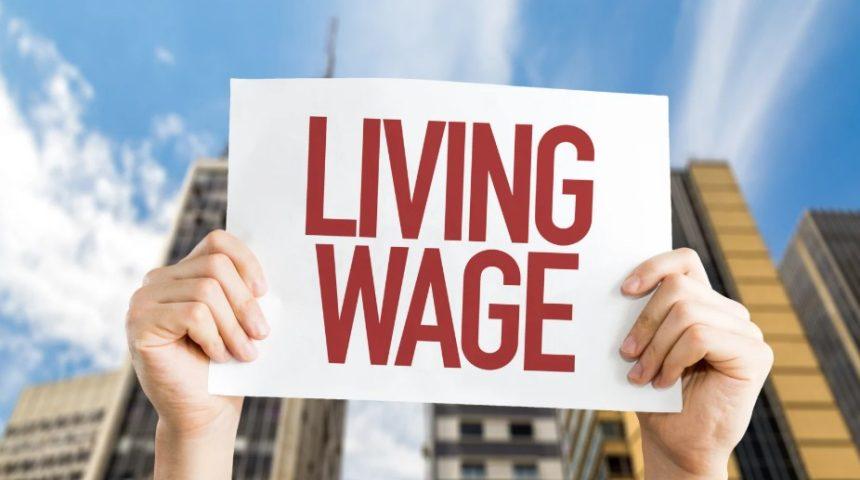|
Getting your Trinity Audio player ready...
|
Do you know how much more you might earn in 2026? With the cost of living still biting and economic conditions shifting across the UK, the national living wage is once again under the spotlight. The government’s continued commitment to ensuring that the lowest-paid workers receive fair pay has led to new projections for the 2026 wage rates.
As we look ahead, both workers and employers are wondering what this increase could mean for wages, business expenses, and day-to-day life. This guide explores what the UK national living wage increase 2026 might look like, why it’s happening, and how it could affect you.
Whether you’re an employee hoping for higher earnings or a business owner planning ahead, the details outlined here will help you make sense of what’s coming. Let’s break it down in simple terms so you can prepare effectively.
What Is the National Living Wage in the UK?

The National Living Wage (NLW) is the minimum hourly pay legally required for workers aged 21 and over in the UK. It’s set by the government and is designed to provide a fair standard of living for full-time workers. It differs from the National Minimum Wage (NMW), which applies to younger age groups and apprentices.
Unlike the “Real Living Wage” calculated by the Living Wage Foundation, the NLW is a statutory wage that employers must pay by law. It’s adjusted regularly based on recommendations from the Low Pay Commission, reflecting changes in the economy and labour market.
Understanding this baseline is crucial as you look ahead to the changes expected in 2026. These adjustments are not just numbers, they directly impact your earnings or the cost of running your business.
Why Is the National Living Wage Increasing in 2026?
The main reason behind the planned increase is the government’s pledge to ensure that the NLW keeps pace with the wider economy. Specifically, the aim is to align the National Living Wage with two-thirds of the UK’s median hourly earnings. This target is seen as a benchmark for reducing low pay and improving living standards.
The rise is also influenced by:
- Rising inflation and living costs
- Stronger than expected wage growth in 2024 and 2025
- A political focus on fair pay across the workforce
The Low Pay Commission (LPC) has been tasked with considering several factors in its recommendations, including inflation, labour market impact, business competitiveness, and macroeconomic trends.
While the increase reflects a drive to uplift worker income, it’s not automatic. The LPC uses a mix of economic analysis and judgement to arrive at a recommendation that balances benefits for both employees and employers.
What Are the Estimated Figures for the 2026 Living Wage?

The latest estimates provided by the Low Pay Commission suggest that the National Living Wage from April 2026 could be £12.71 per hour.
This is the central estimate, but it’s important to note that the actual rate could fall within a range:
| Estimate Type | NLW Estimate (£) | Percentage Increase (%) |
| Low Range | £12.55 | 2.8 |
| Central | £12.71 | 4.1 |
| High Range | £12.86 | 5.3 |
These projections are based on economic forecasts and wage growth trends. For instance, average wages in early 2025 were higher than predicted, and future wage growth is also expected to remain strong.
While these figures give a useful indication, they are not final. The Low Pay Commission will continue to monitor the economy and provide its official recommendation to the government by October 2025.
How Do These Estimates Compare to 2025 Wage Rates?
To understand the scale of the 2026 increase, it’s useful to compare the estimates with the current rates implemented in April 2025.
Here’s how the figures line up:
| Category | 2025 Rate (£) | 2026 Estimate (£) | Increase (£) | Increase (%) |
| National Living Wage (21+) | £12.21 | £12.71 | £0.50 | 4.1% |
| 18-20 Year Old Rate | £10.00 | TBC | TBC | TBC |
| 16-17 Year Old Rate | £7.55 | TBC | TBC | TBC |
| Apprentice Rate | £7.55 | TBC | TBC | TBC |
| Accommodation Offset | £10.66 | TBC | TBC | TBC |
The projected increase of 4.1% for over-21s represents continued progress, even if more modest than the 6.7% rise seen in 2025. The final figures for other age brackets and allowances will depend on ongoing consultations and economic conditions.
Who Will Benefit Most from the Wage Increase?

The 2026 wage increase will benefit a wide range of workers, but some groups stand to gain more than others.
You’ll feel the most direct impact if you are:
- Earning close to the current NLW or NMW thresholds
- A part-time worker relying on hourly pay
- A younger worker approaching the 21+ age category
- An apprentice in a low-paying role
The rise could also bring positive change to certain sectors where low pay is common, such as hospitality, retail, and social care. Workers in these industries could see their earnings rise above inflation-adjusted rates.
For families and individuals struggling with the cost of living, the increase may help offset expenses like rent, transport, and energy. However, whether it fully keeps pace with real-world inflation remains to be seen.
What Does This Mean for Employers in the UK?
As a business owner or manager, the projected 2026 increase means you’ll need to review your wage structure and payroll planning.
Here are a few implications to consider:
- Higher operating costs for labour-heavy sectors
- Potential need to adjust prices or streamline operations
- Legal obligation to stay compliant with updated wage laws
- Reviewing contracts for employees turning 21 before April 2026
Employers must also factor in regional wage competition. In areas where recruitment is already challenging, offering only the minimum wage may no longer be enough to attract or retain staff. Planning ahead now, before the October 2025 announcement, can help avoid last-minute pressure on your wage bill.
How Does the Living Wage Relate to Inflation and the Cost of Living?

The relationship between the National Living Wage and inflation is critical. A wage increase only improves living standards if it outpaces the rate at which goods and services become more expensive.
As of 2025:
- Inflation is forecast to be 3.9% by Q4
- Year-on-year wage growth reached 5.1% in May
This suggests that projected wage rises are, at least for now, staying ahead of inflation. However, that balance can shift quickly with changes in energy prices, housing costs, or other macroeconomic factors.
The Real Living Wage, calculated independently, often exceeds the statutory NLW. For many, it’s a more realistic measure of what’s needed to live with dignity in the UK today.
When Will the Final 2026 National Living Wage Be Confirmed?
The Low Pay Commission will deliver its final recommendations by the end of October 2025. This will give employers and workers around five months to prepare before the new rates take effect in April 2026.
Key milestones to watch include:
- Ongoing wage growth tracking throughout 2025
- Government fiscal statements and policy updates
- Consultation responses from industry bodies and trade unions
It’s worth signing up for updates from the government’s official channels or subscribing to alerts from employer associations. Staying ahead of this timeline will ensure you’re not caught off guard when changes come into force.
How Can You Stay Updated on National Wage Developments?
Keeping informed about wage regulations and future estimates is essential for both workers and employers.
Here’s how you can stay up to date:
- Follow updates from the Low Pay Commission
- Monitor the official gov.uk announcements
- Subscribe to industry newsletters or trade associations
- Watch news platforms for economic forecasts and wage trends
Being proactive allows you to anticipate changes and make decisions with confidence, whether you’re managing payroll or negotiating your next job offer.
What Are the Current National Minimum Wage Rates?

Understanding where things stand today is essential when looking ahead to the upcoming changes. The following table shows the current National Minimum Wage (NMW) and National Living Wage (NLW) rates in effect since 1 April 2025, along with how much they increased compared to the previous year.
| Age Group / Category | 2025 Rate (£) | Annual Increase (£) | Annual Increase (%) |
| National Living Wage (21+) | £12.21 | £0.77 | 6.7% |
| 18–20 Year Old Rate | £10.00 | £1.40 | 16.3% |
| 16–17 Year Old Rate | £7.55 | £1.15 | 18.0% |
| Apprentice Rate | £7.55 | £1.15 | 18.0% |
| Accommodation Offset | £10.66 | £0.67 | 6.7% |
These figures represent the government’s ongoing efforts to ensure fair pay across age groups and job roles. The significant percentage increases for younger workers and apprentices highlight a strong focus on raising income levels at the entry level of the labour market.
These 2025 rates form the baseline for the upcoming 2026 increase. The Low Pay Commission will use economic data from 2025, such as inflation and wage growth, to recommend the new rates to take effect from April 2026.
Conclusion
As you look ahead to the UK national living wage increase 2026, it’s clear that important changes are on the horizon. The estimated rise to £12.71 per hour for over-21s signals continued progress toward fairer wages and improved living standards. However, these figures remain projections until confirmed later in 2025.
If you’re a worker, now is the time to understand what your potential earnings could look like and how this might affect your budget or job planning. If you’re an employer, taking early steps to assess the impact on staffing and costs will place you in a stronger position once the final rates are announced.
Ultimately, the increase reflects the government’s long-term goal of ensuring work pays fairly. Stay informed, plan ahead, and be ready to adapt to ensure the 2026 changes work in your favour.
FAQs
Will the 2026 wage increase affect part-time workers?
Yes, the National Living Wage applies to all eligible workers, including part-time employees, based on their hourly rate.
Can employers delay implementing the new wage?
No, employers must comply with new wage rates from the official implementation date, usually 1 April each year.
How does the UK determine two-thirds of median earnings?
The calculation uses national data on hourly earnings, targeting the 66th percentile as a benchmark for low pay.
Is there a real living wage that differs from the legal NLW?
Yes, the Real Living Wage is calculated by the Living Wage Foundation and is often higher than the legal minimum.
Will apprentices also see an increase in 2026?
Apprentice rates are reviewed annually and will likely be updated alongside the NLW, though final figures are pending.
What sectors will feel the most impact of the wage hike?
Retail, hospitality, care services, and food services are typically most affected due to reliance on lower-paid roles.
How do I report an employer not paying the legal minimum wage?
You can report non-compliance directly to HMRC via the GOV.UK website. All reports are confidential.
Recent Posts








